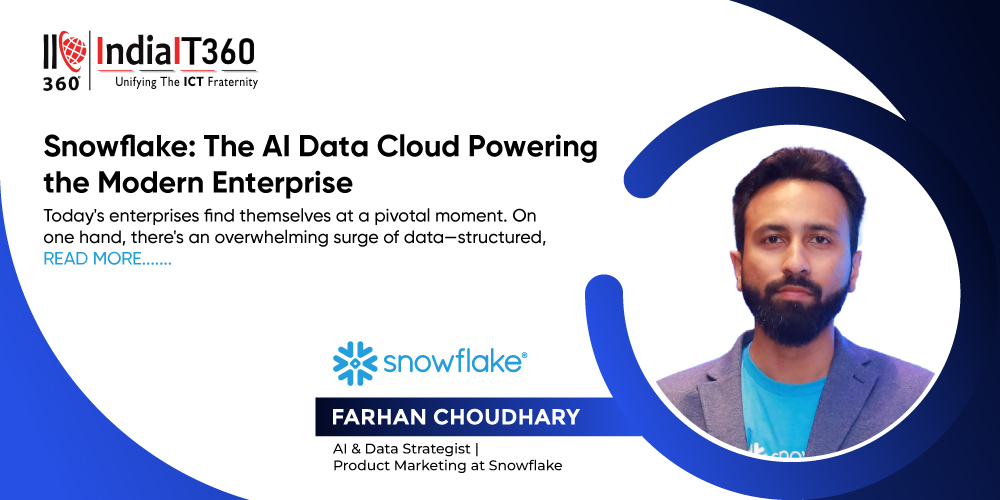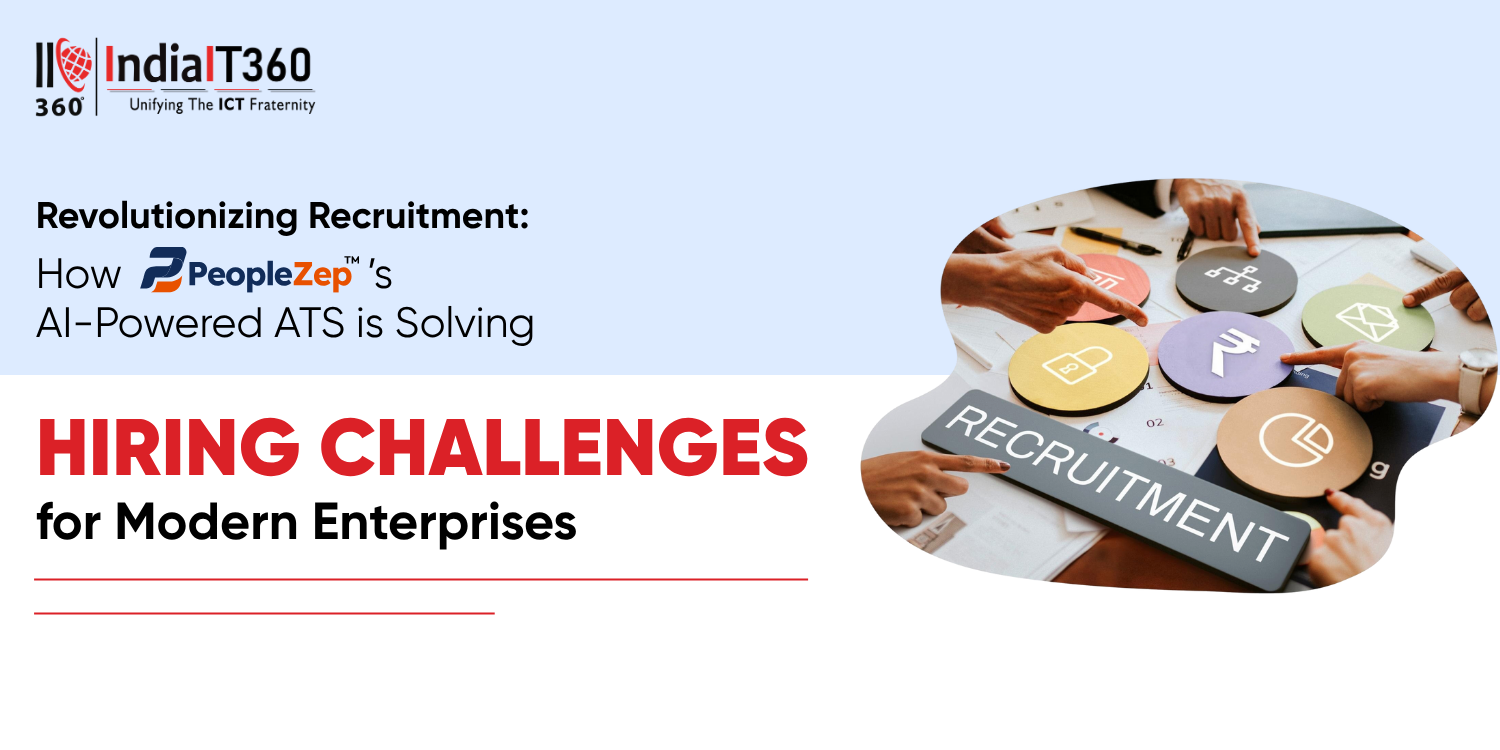Fortifying the Future: How Druva Redefines Data Security in the Age of Cyber Threats
In an era where data breaches and cyber threats are increasingly sophisticated, organizations face the daunting challenge of safeguarding their valuable information. As businesses expand their digital footprints across cloud environments, on-premises systems, and remote workforces, the need for a comprehensive and adaptive data protection strategy becomes paramount.
Enter Druva – a trailblazer in the realm of data security and backup solutions.
Druva’s innovative approach addresses these challenges head-on, offering a suite of features designed to enhance data resilience, streamline recovery processes, and provide unparalleled protection against cyber threats. From its centralized data protection and immutable backups to its AI-driven monitoring and zero-trust security model, Druva empowers organizations to not only shield their data from potential threats but also to swiftly recover in the event of an incident.
Read our latest conversation with Mr. Nick Turner, (SaaS Revenue Leader, and Senior Vice President Sales at Druva) to understand the key aspects of Druva’s Data Security Cloud. Explore how it strengthens organizational data protection against cyber threats, manages backups with continuous monitoring, and integrates seamlessly with existing IT infrastructures.
Q1. How does Druva Data Security Cloud make organizational data resilient against cyber threats while ensuring effective recovery?
Ans. The Druva Data Security Cloud enhances organizational data resilience against cyber threats and ensures effective recovery through several key features:
Centralized Data Protection: Druva centralizes data protection across cloud, on-premises, and edge environments, providing a unified approach to securing data.
Air-Gapped and Immutable Backups: By creating air-gapped and immutable backups, Druva ensures that data remains secure and unaltered, even in the event of a cyber-attack.
Automated Backup and Recovery: Druva automates backup and recovery processes, significantly reducing downtime by quickly restoring the most recent clean version of data.
AI/ML-Based Security Monitoring: The platform uses AI and machine learning to monitor for unusual data activity, such as bulk deletions, and flags these actions to IT for immediate response.
Zero-Trust Security Model: Druva operates on a zero-trust security model, ensuring that only authorized users have access to data. This model helps prevent unauthorized access and potential data breaches.
Rapid Incident Response: With features like accelerated recovery and rollback actions, Druva enables organizations to quickly recover data and resume operations after a cyber incident. These features collectively help organizations maintain data integrity, minimize downtime, and ensure business continuity in the face of cyber threats.
Q2. Could you walk us through the process of protection, response, and recovery that helps manage backup with continuous data monitoring?
Ans. Here's a step-by-step overview of how Druva manages backup with continuous data monitoring through its protection, response, and recovery processes:
1. Protection
Centralized Data Management: Druva centralizes data protection across various environments (cloud, on-premises, and edge), ensuring comprehensive coverage.
Automated Backups: Regular, automated backups are scheduled to ensure data is consistently protected without manual intervention.
Air-Gapped and Immutable Storage: Backups are stored in an air-gapped, immutable format, preventing tampering or deletion by malicious actors.
2. Continuous Monitoring
AI/ML-Based Anomaly Detection: Druva employs AI and machine learning to continuously monitor data activity. This helps in detecting unusual patterns, such as bulk deletions or unauthorized access attempts.
Real-Time Alerts: Any anomalies detected trigger real-time alerts, allowing IT teams to respond swiftly to potential threats.
Detailed Audit Trails: Comprehensive logging and audit trails provide visibility into all data access and modification activities.
3. Response
Zero-Trust Security Model: Druva's zero-trust approach ensures that only authenticated and authorized users can access data, minimizing the risk of breaches.
Incident Response Automation: Automated workflows are in place to respond to detected threats, such as isolating affected data or initiating recovery processes.
Threat Intelligence Integration: Integration with threat intelligence feeds helps identify and mitigate known vulnerabilities and threats.
4. Recovery
Rapid Data Restoration: In the event of data loss or corruption, Druva enables rapid restoration of the most recent clean backup, minimizing downtime.
Granular Recovery Options: Users can recover specific files, folders, or entire systems, depending on the scope of the incident.
Rollback Capabilities: Druva allows for rollback to a known good state, ensuring that operations can resume quickly and efficiently. These processes ensure that Druva not only protects data but also provides robust mechanisms for detecting, responding to, and recovering from cyber threats.
Q3. What exactly is the Druva Data Security Cloud, and how does it benefit organizations in today's rapidly evolving threat landscape?
Ans. The Druva Data Security Cloud is a fully managed, SaaS-based solution designed to protect organizational data across cloud, on-premises, and edge environments.
Here’s how it benefits organizations in today's rapidly evolving threat landscape:
Key Features and Benefits
Centralized Data Protection and Unified Management
Zero-Trust Security Model
AI/ML-Based Monitoring
Automated Backup and Recovery
Scalability and Flexibility
Compliance and Governance
Overall, the Druva Data Security Cloud provides a comprehensive, scalable, and secure solution for protecting organizational data in a dynamic threat environment.
Q4. How does Druva’s AI-powered backup assistance differentiate itself from competitors, and why is it more effective in managing and protecting data?
Ans. Druva’s AI-powered backup assistance, particularly through its AI copilot named Dru, sets itself apart from competitors in several key ways, making it more effective in managing and protecting data:
Differentiators
1. Fully Integrated AI Copilot:
Not Just a Chatbot: Unlike many AI solutions that function as standalone chatbots, Druva’s AI copilot is fully integrated into the backup platform. This integration allows for seamless interaction and more effective data protection processes.
2. Generative AI for Troubleshooting:
Proactive Problem Solving: Druva uses generative AI to proactively identify and troubleshoot issues. This helps quickly diagnose backup failures and other anomalies, reduce downtime, and ensure data integrity.
3. AI-Powered Counsel:
Smarter IT Decisions: Druva’s AI provides actionable insights and recommendations, helping IT teams make smarter decisions regarding data protection and management.
4. Continuous Learning and Adaptation:
Adaptive Algorithms: The AI continuously learns from data patterns and user interactions, improving its effectiveness over time. This ensures that the backup processes are always optimized and up-to-date with the latest threat intelligence.
Effectiveness in Managing and Protecting Data
1. Enhanced Security:
Real-Time Monitoring: AI-driven monitoring detects unusual data activities in real-time, allowing for immediate response to potential threats.
Zero-Trust Model: Ensures that only authorized users have access to data, reducing the risk of breaches.
2. Efficiency and Automation:
Automated Workflows: AI automates routine tasks such as backup scheduling, data recovery, and threat response, freeing up IT resources for more strategic initiatives.
Rapid Recovery: In the event of data loss or corruption, AI enables rapid restoration of the most recent clean backup, minimizing downtime.
3. Scalability: Cloud-Native Architecture - Druva’s AI-powered solutions are built on a cloud-native architecture, allowing for easy scalability to meet growing data protection needs.
4. User-Friendly Interface: Intuitive Design - The AI copilot provides an intuitive interface that simplifies complex data protection tasks, making it easier for users to navigate and manage their data. By leveraging these advanced AI capabilities, Druva ensures that organizations can effectively manage and protect their data in an increasingly complex and evolving threat landscape.

Q5. Can you elaborate on the key features of Druva Data Security Cloud that specifically address the needs of remote and hybrid work environments?
Ans. The Druva Data Security Cloud offers several features that are particularly beneficial for remote and hybrid work environments:
Key Features:
Centralized Data Protection and Unified Management
Air-Gapped and Immutable Backups
Scalability and Flexibility with Cloud-Native Architecture
Consumption-Based Pricing
Zero-Trust Security Model
Data is encrypted both in transit and at rest, enhancing security
AI/ML-Based Monitoring
Automated Backup and Recovery
Scalability and Flexibility
Compliance and Governance
Q6. How does Druva integrate with existing IT infrastructure, and what level of flexibility does it offer in terms of deployment and management?
Ans. Druva integrates seamlessly with existing IT infrastructure and offers a high level of flexibility in terms of deployment and management.
Integration with Existing IT Infrastructure
1. Broad Compatibility:
Cloud, On-Premises, and Hybrid Environments: Druva supports a wide range of environments, including cloud-native, on-premises, and hybrid setups.
2. SaaS and Virtualization Partners: Druva integrates with leading SaaS providers and virtualization platforms like VMware and Nutanix, ensuring comprehensive data protection across various applications and workloads.
3. API and SDK Support:
Custom Integrations: Druva provides robust APIs and SDKs, allowing organizations to create custom integrations tailored to their specific needs.
4. Technology Alliance Program:
Strategic Partnerships: Druva has established partnerships with major technology providers like AWS, Microsoft Azure, and Google Cloud, enhancing its integration capabilities and offering a wide range of deployment options.
Flexibility in Deployment and Management
1. Cloud-Native Architecture:
Scalability: Druva’s cloud-native design allows for automatic scaling to meet growing data protection needs without the need for additional hardware.
Global Reach: Leveraging cloud infrastructure, Druva provides global data protection and disaster recovery capabilities.
2. Deployment Options:
Hybrid Cloud Support: Druva supports hybrid cloud architectures, enabling organizations to seamlessly move workloads between on-premises and cloud environments.
Consumption-Based Pricing: Flexible pricing models based on consumption help reduce costs and provide financial predictability.
3. Unified Management Console:
Centralized Control: Druva offers a single pane of glass for managing data protection across all environments, simplifying administration and enhancing visibility.
Automated Workflows: Automation of backup, recovery, and compliance tasks reduces manual intervention and improves operational efficiency.
4. Compliance and Governance:
Regulatory Compliance: Druva helps organizations meet various regulatory requirements, such as SOC2, HIPAA, and GDPR, through built-in compliance features.
eDiscovery and Legal Hold: Integrated tools for eDiscovery and legal hold streamline data governance and legal compliance processes. By integrating with existing IT infrastructure and offering flexible deployment and management options, Druva ensures that organizations can protect their data effectively while adapting to changing business needs.
Q7. What role does automation play in Druva’s data security strategy, and how does it improve the overall efficiency of data protection processes?
Ans. Automation is a cornerstone of Druva’s data security strategy, significantly enhancing the efficiency and effectiveness of data protection processes.
Key Roles of Automation
1. Automated Backup and Recovery:
Scheduled Backups: Druva automates the scheduling of regular backups, ensuring that data is consistently protected without manual intervention.
Rapid Restoration: In the event of data loss or corruption, automated recovery processes enable quick restoration of the most recent clean backup, minimizing downtime.
2. AI/ML-Based Monitoring:
Anomaly Detection: AI and machine learning continuously monitor data activity, detecting unusual patterns such as bulk deletions or unauthorized access attempts.
Real-Time Alerts: Automated alerts notify IT teams of any suspicious activities, allowing for immediate response.
3. Incident Response Automation:
Automated Workflows: Predefined workflows automate the response to detected threats, such as isolating affected data or initiating recovery processes.
Integration with SIEM/SOAR: Integration with Security Information and Event Management (SIEM) and Security Orchestration, Automation, and Response (SOAR) systems enhances incident response capabilities.
4. Policy Enforcement:
Consistent Application: Automation ensures that data protection policies are consistently applied across all environments, reducing the risk of human error.
Compliance Management: Automated compliance checks help organizations meet regulatory requirements and maintain data governance.
Benefits of Automation
1. Increased Efficiency:
Reduced Manual Effort: Automation reduces the need for manual intervention in routine tasks, freeing up IT resources for more strategic initiatives.
Faster Response Times: Automated processes enable quicker detection and response to threats, reducing the potential impact of cyber incidents.
2. Enhanced Security:
Proactive Threat Detection: Continuous monitoring and real-time alerts help identify and mitigate threats before they can cause significant damage.
Consistent Protection: Automated policy enforcement ensures that data protection measures are consistently applied, enhancing overall security.
3. Scalability:
Dynamic Scaling: Druva’s cloud-native architecture allows for automatic scaling to meet growing data protection needs without additional hardware.
Adaptability: Automation enables Druva to adapt to changing environments and workloads, ensuring continuous protection.
4. Cost Savings:
Reduced Overhead: Automation reduces the need for manual oversight and maintenance, lowering operational costs.
Optimized Resource Utilization: Consumption-based pricing models and automated scaling help optimize resource utilization and reduce idle capacity.
By leveraging automation, Druva enhances the efficiency, security, and scalability of its data protection processes, ensuring robust protection for organizational data in a dynamic threat landscape.
Q8. How does Druva handle the challenges of data sprawl, especially with the growing use of cloud services and multiple data sources?
Ans. Druva addresses the challenges of data sprawl, particularly with the increasing use of cloud services and multiple data sources, through several key strategies:
Key Strategies
1. Centralized Data Management:
Unified Platform: Druva centralizes data protection across cloud, on-premises, and edge environments, providing a single pane of glass for managing all data.
Elimination of Silos: By consolidating data operations, Druva eliminates data silos, improving visibility and control over dispersed data.
2. Cloud-Native Architecture:
Scalability: Druva’s cloud-native design allows for seamless scaling to accommodate growing data volumes without additional hardware.
Flexibility: Supports various cloud environments, including public, private, and hybrid clouds, ensuring comprehensive data protection across all platforms.
3. AI/ML-Based Monitoring and Management:
Anomaly Detection: Uses AI and machine learning to continuously monitor data activity, detecting unusual patterns and potential threats.
Automated Workflows: Automates routine tasks such as backup scheduling, data recovery, and compliance checks, reducing manual intervention and improving efficiency.
4. Multi-Cloud Support: Cross-Platform Integration: Druva integrates with multiple cloud platforms and SaaS applications, ensuring consistent data protection across diverse environments.
Centralized Visibility: Provides a unified view of data across all cloud services, simplifying management and reducing the risk of data sprawl.
5. Compliance and Governance: Regulatory Compliance: Helps organizations meet various regulatory requirements, such as GDPR, HIPAA, and CCPA, through built-in compliance features.
eDiscovery and Legal Hold: Integrated tools for eDiscovery and legal hold streamline data governance and legal compliance processes.
Benefits
Enhanced Security: Centralized management and AI-driven monitoring improve data security by providing real-time alerts and automated responses to potential threats.
Operational Efficiency: Automation of routine tasks and centralized visibility reduce the complexity of managing data across multiple sources, freeing up IT resources for strategic initiatives.
Cost Savings: By eliminating the need for additional hardware and reducing manual oversight, Druva helps lower operational costs and optimize resource utilization. These strategies ensure that Druva can effectively manage and protect data in a rapidly evolving cloud landscape, addressing the challenges of data sprawl and ensuring robust data protection.
Q9. What kind of customer support and training does Druva provide to ensure that organizations can fully leverage their data security solutions?
Ans. Druva offers comprehensive customer support and training to help organizations fully leverage their data security solutions.
Here are the key components:
Customer Support
1. 24/7 Technical Support:
Global Availability: Druva provides round-the-clock support to address any issues, regardless of time zone.
Multiple Channels: Support is available via phone, email, and live chat, ensuring that help is always accessible.
2. Support Portal:
Self-Service Tools: The support portal offers a range of self-service tools, including a knowledge base, product documentation, and best practice guides.
Service Request Monitoring: Users can monitor the status of their service requests and interact with support teams through the portal.
3. Community Engagement:
Forums and Blogs: Druva’s community forums and blogs provide a platform for users to engage, collaborate, and share insights.
Events: Regular events and webinars offer opportunities for learning and networking with other Druva users.
Training and Professional Services
1. Druva Academy:
In-Person and Online Training: Druva Academy offers both in-person training sessions and online courses, including hands-on labs to gain in-depth product knowledge.
Certification Programs: Certification programs help users validate their expertise and proficiency with Druva products.
2. Professional Services:
Expert Consulting: Druva provides expert consulting services for solution design, deployment, and implementation.
Customized Packages: Tailored service packages are available for different workloads, including data center, cloud, and SaaS applications.
3. Customer Success Resources:
Success Stories: Case studies and success stories highlight how other organizations have successfully implemented Druva solutions.
Best Practices: Access to best practice methodologies and the latest release notes ensures that users can optimize their use of Druva products. These support and training offerings ensure that organizations can maximize the value of their Druva solutions, enhancing their data protection and security capabilities.
Q10. What future innovations or updates can users expect from Druva in terms of enhancing data security and backup capabilities?
Ans. Druva is continuously innovating to enhance data security and backup capabilities. Here are some of the latest and upcoming features that users can expect:
Recent Innovations
1. Threat Hunting Capabilities:
Indicators of Compromise (IOCs): Druva has introduced threat-hunting capabilities that allow IT and security teams to search their global data footprint for IOCs. This helps in quickly understanding the gestation, timeline, and impact of threats.
Contextual Data Insights: Provides contextual data insights throughout incident response workflows to understand, remediate, and recover from critical incidents.
2. Managed Data Detection and Response (Managed DDR): 24x7 Monitoring: Druva offers 24x7x365 monitoring of backups for early threat detection.
Expert Analysis: Incident response experts provide data insights for anomalous behaviour and assist during cyber recovery.
Pre-Built Response Runbooks: Automated response runbooks and lockdown of backups to safeguard data.
Upcoming Enhancements
1. Enhanced Forensics:
Granular Logs and Audit Trails: Druva is enhancing its forensic capabilities with granular logs of data changes and audit trails to help incident response teams analyze incidents more effectively.
Sensitive Data Analysis: Users will be able to perform sensitive data analysis to understand if sensitive data has been compromised and if compliance regulations have been violated.
2. Global Availability Expansion:
Managed DDR Expansion: Druva is expanding the global availability of its Managed DDR service, making it accessible to more international customers at no additional charge.
3. Improved Recovery Processes:
Curated Snapshots: Druva is working on creating curated snapshots by scanning multiple backups to identify the most recent, clean version of each file, ensuring secure recovery and minimizing data loss. These innovations and updates are designed to provide more robust data protection, faster incident response, and enhanced recovery capabilities, helping organizations stay resilient in the face of evolving cyber threats.
Team IndiaIT360
Write With Us
IndiaIT360 is passionate about fostering community within the tech industry. IndiaIT360's commitment to staying abreast of the latest trends and advancements in the IT industry ensures that their content is not only informative but also insightful and forward-thinking. Through their writing, they aim to demystify complex technological concepts, making them accessible to a broad audience.
1. Protection
Centralized Data Management: Druva centralizes data protection across various environments (cloud, on-premises, and edge), ensuring comprehensive coverage.
Automated Backups: Regular, automated backups are scheduled to ensure data is consistently protected without manual intervention.
Air-Gapped and Immutable Storage: Backups are stored in an air-gapped, immutable format, preventing tampering or deletion by malicious actors.
2. Continuous Monitoring
AI/ML-Based Anomaly Detection: Druva employs AI and machine learning to continuously monitor data activity. This helps in detecting unusual patterns, such as bulk deletions or unauthorized access attempts.
Real-Time Alerts: Any anomalies detected trigger real-time alerts, allowing IT teams to respond swiftly to potential threats.
Detailed Audit Trails: Comprehensive logging and audit trails provide visibility into all data access and modification activities.
3. Response
Zero-Trust Security Model: Druva's zero-trust approach ensures that only authenticated and authorized users can access data, minimizing the risk of breaches.
Incident Response Automation: Automated workflows are in place to respond to detected threats, such as isolating affected data or initiating recovery processes.
Threat Intelligence Integration: Integration with threat intelligence feeds helps identify and mitigate known vulnerabilities and threats.
4. Recovery
Rapid Data Restoration: In the event of data loss or corruption, Druva enables rapid restoration of the most recent clean backup, minimizing downtime.
Granular Recovery Options: Users can recover specific files, folders, or entire systems, depending on the scope of the incident.
Rollback Capabilities: Druva allows for rollback to a known good state, ensuring that operations can resume quickly and efficiently. These processes ensure that Druva not only protects data but also provides robust mechanisms for detecting, responding to, and recovering from cyber threats.
Q3. What exactly is the Druva Data Security Cloud, and how does it benefit organizations in today's rapidly evolving threat landscape?
Ans. The Druva Data Security Cloud is a fully managed, SaaS-based solution designed to protect organizational data across cloud, on-premises, and edge environments.
Here’s how it benefits organizations in today's rapidly evolving threat landscape:
Key Features and Benefits
Centralized Data Protection and Unified Management
Zero-Trust Security Model
AI/ML-Based Monitoring
Automated Backup and Recovery
Scalability and Flexibility
Compliance and Governance
Overall, the Druva Data Security Cloud provides a comprehensive, scalable, and secure solution for protecting organizational data in a dynamic threat environment.
Q4. How does Druva’s AI-powered backup assistance differentiate itself from competitors, and why is it more effective in managing and protecting data?
Ans. Druva’s AI-powered backup assistance, particularly through its AI copilot named Dru, sets itself apart from competitors in several key ways, making it more effective in managing and protecting data:
Differentiators
1. Fully Integrated AI Copilot:
Not Just a Chatbot: Unlike many AI solutions that function as standalone chatbots, Druva’s AI copilot is fully integrated into the backup platform. This integration allows for seamless interaction and more effective data protection processes.
2. Generative AI for Troubleshooting:
Proactive Problem Solving: Druva uses generative AI to proactively identify and troubleshoot issues. This helps quickly diagnose backup failures and other anomalies, reduce downtime, and ensure data integrity.
3. AI-Powered Counsel:
Smarter IT Decisions: Druva’s AI provides actionable insights and recommendations, helping IT teams make smarter decisions regarding data protection and management.
4. Continuous Learning and Adaptation:
Adaptive Algorithms: The AI continuously learns from data patterns and user interactions, improving its effectiveness over time. This ensures that the backup processes are always optimized and up-to-date with the latest threat intelligence.
Effectiveness in Managing and Protecting Data
1. Enhanced Security:
Real-Time Monitoring: AI-driven monitoring detects unusual data activities in real-time, allowing for immediate response to potential threats.
Zero-Trust Model: Ensures that only authorized users have access to data, reducing the risk of breaches.
2. Efficiency and Automation:
Automated Workflows: AI automates routine tasks such as backup scheduling, data recovery, and threat response, freeing up IT resources for more strategic initiatives.
Rapid Recovery: In the event of data loss or corruption, AI enables rapid restoration of the most recent clean backup, minimizing downtime.
3. Scalability: Cloud-Native Architecture - Druva’s AI-powered solutions are built on a cloud-native architecture, allowing for easy scalability to meet growing data protection needs.
4. User-Friendly Interface: Intuitive Design - The AI copilot provides an intuitive interface that simplifies complex data protection tasks, making it easier for users to navigate and manage their data. By leveraging these advanced AI capabilities, Druva ensures that organizations can effectively manage and protect their data in an increasingly complex and evolving threat landscape.

Q5. Can you elaborate on the key features of Druva Data Security Cloud that specifically address the needs of remote and hybrid work environments?
Ans. The Druva Data Security Cloud offers several features that are particularly beneficial for remote and hybrid work environments:
Key Features:
Centralized Data Protection and Unified Management
Air-Gapped and Immutable Backups
Scalability and Flexibility with Cloud-Native Architecture
Consumption-Based Pricing
Zero-Trust Security Model
Data is encrypted both in transit and at rest, enhancing security
AI/ML-Based Monitoring
Automated Backup and Recovery
Scalability and Flexibility
Compliance and Governance
Q6. How does Druva integrate with existing IT infrastructure, and what level of flexibility does it offer in terms of deployment and management?
Ans. Druva integrates seamlessly with existing IT infrastructure and offers a high level of flexibility in terms of deployment and management.
Integration with Existing IT Infrastructure
1. Broad Compatibility:
Cloud, On-Premises, and Hybrid Environments: Druva supports a wide range of environments, including cloud-native, on-premises, and hybrid setups.
2. SaaS and Virtualization Partners: Druva integrates with leading SaaS providers and virtualization platforms like VMware and Nutanix, ensuring comprehensive data protection across various applications and workloads.
3. API and SDK Support:
Custom Integrations: Druva provides robust APIs and SDKs, allowing organizations to create custom integrations tailored to their specific needs.
4. Technology Alliance Program:
Strategic Partnerships: Druva has established partnerships with major technology providers like AWS, Microsoft Azure, and Google Cloud, enhancing its integration capabilities and offering a wide range of deployment options.
Flexibility in Deployment and Management
1. Cloud-Native Architecture:
Scalability: Druva’s cloud-native design allows for automatic scaling to meet growing data protection needs without the need for additional hardware.
Global Reach: Leveraging cloud infrastructure, Druva provides global data protection and disaster recovery capabilities.
2. Deployment Options:
Hybrid Cloud Support: Druva supports hybrid cloud architectures, enabling organizations to seamlessly move workloads between on-premises and cloud environments.
Consumption-Based Pricing: Flexible pricing models based on consumption help reduce costs and provide financial predictability.
3. Unified Management Console:
Centralized Control: Druva offers a single pane of glass for managing data protection across all environments, simplifying administration and enhancing visibility.
Automated Workflows: Automation of backup, recovery, and compliance tasks reduces manual intervention and improves operational efficiency.
4. Compliance and Governance:
Regulatory Compliance: Druva helps organizations meet various regulatory requirements, such as SOC2, HIPAA, and GDPR, through built-in compliance features.
eDiscovery and Legal Hold: Integrated tools for eDiscovery and legal hold streamline data governance and legal compliance processes. By integrating with existing IT infrastructure and offering flexible deployment and management options, Druva ensures that organizations can protect their data effectively while adapting to changing business needs.
Q7. What role does automation play in Druva’s data security strategy, and how does it improve the overall efficiency of data protection processes?
Ans. Automation is a cornerstone of Druva’s data security strategy, significantly enhancing the efficiency and effectiveness of data protection processes.
Key Roles of Automation
1. Automated Backup and Recovery:
Scheduled Backups: Druva automates the scheduling of regular backups, ensuring that data is consistently protected without manual intervention.
Rapid Restoration: In the event of data loss or corruption, automated recovery processes enable quick restoration of the most recent clean backup, minimizing downtime.
2. AI/ML-Based Monitoring:
Anomaly Detection: AI and machine learning continuously monitor data activity, detecting unusual patterns such as bulk deletions or unauthorized access attempts.
Real-Time Alerts: Automated alerts notify IT teams of any suspicious activities, allowing for immediate response.
3. Incident Response Automation:
Automated Workflows: Predefined workflows automate the response to detected threats, such as isolating affected data or initiating recovery processes.
Integration with SIEM/SOAR: Integration with Security Information and Event Management (SIEM) and Security Orchestration, Automation, and Response (SOAR) systems enhances incident response capabilities.
4. Policy Enforcement:
Consistent Application: Automation ensures that data protection policies are consistently applied across all environments, reducing the risk of human error.
Compliance Management: Automated compliance checks help organizations meet regulatory requirements and maintain data governance.
Benefits of Automation
1. Increased Efficiency:
Reduced Manual Effort: Automation reduces the need for manual intervention in routine tasks, freeing up IT resources for more strategic initiatives.
Faster Response Times: Automated processes enable quicker detection and response to threats, reducing the potential impact of cyber incidents.
2. Enhanced Security:
Proactive Threat Detection: Continuous monitoring and real-time alerts help identify and mitigate threats before they can cause significant damage.
Consistent Protection: Automated policy enforcement ensures that data protection measures are consistently applied, enhancing overall security.
3. Scalability:
Dynamic Scaling: Druva’s cloud-native architecture allows for automatic scaling to meet growing data protection needs without additional hardware.
Adaptability: Automation enables Druva to adapt to changing environments and workloads, ensuring continuous protection.
4. Cost Savings:
Reduced Overhead: Automation reduces the need for manual oversight and maintenance, lowering operational costs.
Optimized Resource Utilization: Consumption-based pricing models and automated scaling help optimize resource utilization and reduce idle capacity.
By leveraging automation, Druva enhances the efficiency, security, and scalability of its data protection processes, ensuring robust protection for organizational data in a dynamic threat landscape.
Q8. How does Druva handle the challenges of data sprawl, especially with the growing use of cloud services and multiple data sources?
Ans. Druva addresses the challenges of data sprawl, particularly with the increasing use of cloud services and multiple data sources, through several key strategies:
Key Strategies
1. Centralized Data Management:
Unified Platform: Druva centralizes data protection across cloud, on-premises, and edge environments, providing a single pane of glass for managing all data.
Elimination of Silos: By consolidating data operations, Druva eliminates data silos, improving visibility and control over dispersed data.
2. Cloud-Native Architecture:
Scalability: Druva’s cloud-native design allows for seamless scaling to accommodate growing data volumes without additional hardware.
Flexibility: Supports various cloud environments, including public, private, and hybrid clouds, ensuring comprehensive data protection across all platforms.
3. AI/ML-Based Monitoring and Management:
Anomaly Detection: Uses AI and machine learning to continuously monitor data activity, detecting unusual patterns and potential threats.
Automated Workflows: Automates routine tasks such as backup scheduling, data recovery, and compliance checks, reducing manual intervention and improving efficiency.
4. Multi-Cloud Support: Cross-Platform Integration: Druva integrates with multiple cloud platforms and SaaS applications, ensuring consistent data protection across diverse environments.
Centralized Visibility: Provides a unified view of data across all cloud services, simplifying management and reducing the risk of data sprawl.
5. Compliance and Governance: Regulatory Compliance: Helps organizations meet various regulatory requirements, such as GDPR, HIPAA, and CCPA, through built-in compliance features.
eDiscovery and Legal Hold: Integrated tools for eDiscovery and legal hold streamline data governance and legal compliance processes.
Benefits
Enhanced Security: Centralized management and AI-driven monitoring improve data security by providing real-time alerts and automated responses to potential threats.
Operational Efficiency: Automation of routine tasks and centralized visibility reduce the complexity of managing data across multiple sources, freeing up IT resources for strategic initiatives.
Cost Savings: By eliminating the need for additional hardware and reducing manual oversight, Druva helps lower operational costs and optimize resource utilization. These strategies ensure that Druva can effectively manage and protect data in a rapidly evolving cloud landscape, addressing the challenges of data sprawl and ensuring robust data protection.
Q9. What kind of customer support and training does Druva provide to ensure that organizations can fully leverage their data security solutions?
Ans. Druva offers comprehensive customer support and training to help organizations fully leverage their data security solutions.
Here are the key components:
Customer Support
1. 24/7 Technical Support:
Global Availability: Druva provides round-the-clock support to address any issues, regardless of time zone.
Multiple Channels: Support is available via phone, email, and live chat, ensuring that help is always accessible.
2. Support Portal:
Self-Service Tools: The support portal offers a range of self-service tools, including a knowledge base, product documentation, and best practice guides.
Service Request Monitoring: Users can monitor the status of their service requests and interact with support teams through the portal.
3. Community Engagement:
Forums and Blogs: Druva’s community forums and blogs provide a platform for users to engage, collaborate, and share insights.
Events: Regular events and webinars offer opportunities for learning and networking with other Druva users.
Training and Professional Services
1. Druva Academy:
In-Person and Online Training: Druva Academy offers both in-person training sessions and online courses, including hands-on labs to gain in-depth product knowledge.
Certification Programs: Certification programs help users validate their expertise and proficiency with Druva products.
2. Professional Services:
Expert Consulting: Druva provides expert consulting services for solution design, deployment, and implementation.
Customized Packages: Tailored service packages are available for different workloads, including data center, cloud, and SaaS applications.
3. Customer Success Resources:
Success Stories: Case studies and success stories highlight how other organizations have successfully implemented Druva solutions.
Best Practices: Access to best practice methodologies and the latest release notes ensures that users can optimize their use of Druva products. These support and training offerings ensure that organizations can maximize the value of their Druva solutions, enhancing their data protection and security capabilities.
Q10. What future innovations or updates can users expect from Druva in terms of enhancing data security and backup capabilities?
Ans. Druva is continuously innovating to enhance data security and backup capabilities. Here are some of the latest and upcoming features that users can expect:
Recent Innovations
1. Threat Hunting Capabilities:
Indicators of Compromise (IOCs): Druva has introduced threat-hunting capabilities that allow IT and security teams to search their global data footprint for IOCs. This helps in quickly understanding the gestation, timeline, and impact of threats.
Contextual Data Insights: Provides contextual data insights throughout incident response workflows to understand, remediate, and recover from critical incidents.
2. Managed Data Detection and Response (Managed DDR): 24x7 Monitoring: Druva offers 24x7x365 monitoring of backups for early threat detection.
Expert Analysis: Incident response experts provide data insights for anomalous behaviour and assist during cyber recovery.
Pre-Built Response Runbooks: Automated response runbooks and lockdown of backups to safeguard data.
Upcoming Enhancements
1. Enhanced Forensics:
Granular Logs and Audit Trails: Druva is enhancing its forensic capabilities with granular logs of data changes and audit trails to help incident response teams analyze incidents more effectively.
Sensitive Data Analysis: Users will be able to perform sensitive data analysis to understand if sensitive data has been compromised and if compliance regulations have been violated.
2. Global Availability Expansion:
Managed DDR Expansion: Druva is expanding the global availability of its Managed DDR service, making it accessible to more international customers at no additional charge.
3. Improved Recovery Processes:
Curated Snapshots: Druva is working on creating curated snapshots by scanning multiple backups to identify the most recent, clean version of each file, ensuring secure recovery and minimizing data loss. These innovations and updates are designed to provide more robust data protection, faster incident response, and enhanced recovery capabilities, helping organizations stay resilient in the face of evolving cyber threats.
Team IndiaIT360
Write With Us
IndiaIT360 is passionate about fostering community within the tech industry. IndiaIT360's commitment to staying abreast of the latest trends and advancements in the IT industry ensures that their content is not only informative but also insightful and forward-thinking. Through their writing, they aim to demystify complex technological concepts, making them accessible to a broad audience.
Differentiators
1. Fully Integrated AI Copilot:Not Just a Chatbot: Unlike many AI solutions that function as standalone chatbots, Druva’s AI copilot is fully integrated into the backup platform. This integration allows for seamless interaction and more effective data protection processes.
2. Generative AI for Troubleshooting:
Proactive Problem Solving: Druva uses generative AI to proactively identify and troubleshoot issues. This helps quickly diagnose backup failures and other anomalies, reduce downtime, and ensure data integrity.
3. AI-Powered Counsel:
Smarter IT Decisions: Druva’s AI provides actionable insights and recommendations, helping IT teams make smarter decisions regarding data protection and management.
4. Continuous Learning and Adaptation:
Adaptive Algorithms: The AI continuously learns from data patterns and user interactions, improving its effectiveness over time. This ensures that the backup processes are always optimized and up-to-date with the latest threat intelligence.
Effectiveness in Managing and Protecting Data
1. Enhanced Security:Real-Time Monitoring: AI-driven monitoring detects unusual data activities in real-time, allowing for immediate response to potential threats.
Zero-Trust Model: Ensures that only authorized users have access to data, reducing the risk of breaches.
2. Efficiency and Automation:
Automated Workflows: AI automates routine tasks such as backup scheduling, data recovery, and threat response, freeing up IT resources for more strategic initiatives.
Rapid Recovery: In the event of data loss or corruption, AI enables rapid restoration of the most recent clean backup, minimizing downtime.
3. Scalability: Cloud-Native Architecture - Druva’s AI-powered solutions are built on a cloud-native architecture, allowing for easy scalability to meet growing data protection needs.
4. User-Friendly Interface: Intuitive Design - The AI copilot provides an intuitive interface that simplifies complex data protection tasks, making it easier for users to navigate and manage their data. By leveraging these advanced AI capabilities, Druva ensures that organizations can effectively manage and protect their data in an increasingly complex and evolving threat landscape.

Q5. Can you elaborate on the key features of Druva Data Security Cloud that specifically address the needs of remote and hybrid work environments?
Ans. The Druva Data Security Cloud offers several features that are particularly beneficial for remote and hybrid work environments:
Key Features:
Centralized Data Protection and Unified Management
Air-Gapped and Immutable Backups
Scalability and Flexibility with Cloud-Native Architecture
Consumption-Based Pricing
Zero-Trust Security Model
Data is encrypted both in transit and at rest, enhancing security
AI/ML-Based Monitoring
Automated Backup and Recovery
Scalability and Flexibility
Compliance and Governance
Q6. How does Druva integrate with existing IT infrastructure, and what level of flexibility does it offer in terms of deployment and management?
Ans. Druva integrates seamlessly with existing IT infrastructure and offers a high level of flexibility in terms of deployment and management.
Integration with Existing IT Infrastructure
1. Broad Compatibility:
Cloud, On-Premises, and Hybrid Environments: Druva supports a wide range of environments, including cloud-native, on-premises, and hybrid setups.
2. SaaS and Virtualization Partners: Druva integrates with leading SaaS providers and virtualization platforms like VMware and Nutanix, ensuring comprehensive data protection across various applications and workloads.
3. API and SDK Support:
Custom Integrations: Druva provides robust APIs and SDKs, allowing organizations to create custom integrations tailored to their specific needs.
4. Technology Alliance Program:
Strategic Partnerships: Druva has established partnerships with major technology providers like AWS, Microsoft Azure, and Google Cloud, enhancing its integration capabilities and offering a wide range of deployment options.
Flexibility in Deployment and Management
1. Cloud-Native Architecture:
Scalability: Druva’s cloud-native design allows for automatic scaling to meet growing data protection needs without the need for additional hardware.
Global Reach: Leveraging cloud infrastructure, Druva provides global data protection and disaster recovery capabilities.
2. Deployment Options:
Hybrid Cloud Support: Druva supports hybrid cloud architectures, enabling organizations to seamlessly move workloads between on-premises and cloud environments.
Consumption-Based Pricing: Flexible pricing models based on consumption help reduce costs and provide financial predictability.
3. Unified Management Console:
Centralized Control: Druva offers a single pane of glass for managing data protection across all environments, simplifying administration and enhancing visibility.
Automated Workflows: Automation of backup, recovery, and compliance tasks reduces manual intervention and improves operational efficiency.
4. Compliance and Governance:
Regulatory Compliance: Druva helps organizations meet various regulatory requirements, such as SOC2, HIPAA, and GDPR, through built-in compliance features.
eDiscovery and Legal Hold: Integrated tools for eDiscovery and legal hold streamline data governance and legal compliance processes. By integrating with existing IT infrastructure and offering flexible deployment and management options, Druva ensures that organizations can protect their data effectively while adapting to changing business needs.
Q7. What role does automation play in Druva’s data security strategy, and how does it improve the overall efficiency of data protection processes?
Ans. Automation is a cornerstone of Druva’s data security strategy, significantly enhancing the efficiency and effectiveness of data protection processes.
Key Roles of Automation
1. Automated Backup and Recovery:
Scheduled Backups: Druva automates the scheduling of regular backups, ensuring that data is consistently protected without manual intervention.
Rapid Restoration: In the event of data loss or corruption, automated recovery processes enable quick restoration of the most recent clean backup, minimizing downtime.
2. AI/ML-Based Monitoring:
Anomaly Detection: AI and machine learning continuously monitor data activity, detecting unusual patterns such as bulk deletions or unauthorized access attempts.
Real-Time Alerts: Automated alerts notify IT teams of any suspicious activities, allowing for immediate response.
3. Incident Response Automation:
Automated Workflows: Predefined workflows automate the response to detected threats, such as isolating affected data or initiating recovery processes.
Integration with SIEM/SOAR: Integration with Security Information and Event Management (SIEM) and Security Orchestration, Automation, and Response (SOAR) systems enhances incident response capabilities.
4. Policy Enforcement:
Consistent Application: Automation ensures that data protection policies are consistently applied across all environments, reducing the risk of human error.
Compliance Management: Automated compliance checks help organizations meet regulatory requirements and maintain data governance.
Benefits of Automation
1. Increased Efficiency:
Reduced Manual Effort: Automation reduces the need for manual intervention in routine tasks, freeing up IT resources for more strategic initiatives.
Faster Response Times: Automated processes enable quicker detection and response to threats, reducing the potential impact of cyber incidents.
2. Enhanced Security:
Proactive Threat Detection: Continuous monitoring and real-time alerts help identify and mitigate threats before they can cause significant damage.
Consistent Protection: Automated policy enforcement ensures that data protection measures are consistently applied, enhancing overall security.
3. Scalability:
Dynamic Scaling: Druva’s cloud-native architecture allows for automatic scaling to meet growing data protection needs without additional hardware.
Adaptability: Automation enables Druva to adapt to changing environments and workloads, ensuring continuous protection.
4. Cost Savings:
Reduced Overhead: Automation reduces the need for manual oversight and maintenance, lowering operational costs.
Optimized Resource Utilization: Consumption-based pricing models and automated scaling help optimize resource utilization and reduce idle capacity.
By leveraging automation, Druva enhances the efficiency, security, and scalability of its data protection processes, ensuring robust protection for organizational data in a dynamic threat landscape.
Q8. How does Druva handle the challenges of data sprawl, especially with the growing use of cloud services and multiple data sources?
Ans. Druva addresses the challenges of data sprawl, particularly with the increasing use of cloud services and multiple data sources, through several key strategies:
Key Strategies
1. Centralized Data Management:
Unified Platform: Druva centralizes data protection across cloud, on-premises, and edge environments, providing a single pane of glass for managing all data.
Elimination of Silos: By consolidating data operations, Druva eliminates data silos, improving visibility and control over dispersed data.
2. Cloud-Native Architecture:
Scalability: Druva’s cloud-native design allows for seamless scaling to accommodate growing data volumes without additional hardware.
Flexibility: Supports various cloud environments, including public, private, and hybrid clouds, ensuring comprehensive data protection across all platforms.
3. AI/ML-Based Monitoring and Management:
Anomaly Detection: Uses AI and machine learning to continuously monitor data activity, detecting unusual patterns and potential threats.
Automated Workflows: Automates routine tasks such as backup scheduling, data recovery, and compliance checks, reducing manual intervention and improving efficiency.
4. Multi-Cloud Support: Cross-Platform Integration: Druva integrates with multiple cloud platforms and SaaS applications, ensuring consistent data protection across diverse environments.
Centralized Visibility: Provides a unified view of data across all cloud services, simplifying management and reducing the risk of data sprawl.
5. Compliance and Governance: Regulatory Compliance: Helps organizations meet various regulatory requirements, such as GDPR, HIPAA, and CCPA, through built-in compliance features.
eDiscovery and Legal Hold: Integrated tools for eDiscovery and legal hold streamline data governance and legal compliance processes.
Benefits
Enhanced Security: Centralized management and AI-driven monitoring improve data security by providing real-time alerts and automated responses to potential threats.
Operational Efficiency: Automation of routine tasks and centralized visibility reduce the complexity of managing data across multiple sources, freeing up IT resources for strategic initiatives.
Cost Savings: By eliminating the need for additional hardware and reducing manual oversight, Druva helps lower operational costs and optimize resource utilization. These strategies ensure that Druva can effectively manage and protect data in a rapidly evolving cloud landscape, addressing the challenges of data sprawl and ensuring robust data protection.
Q9. What kind of customer support and training does Druva provide to ensure that organizations can fully leverage their data security solutions?
Ans. Druva offers comprehensive customer support and training to help organizations fully leverage their data security solutions.
Here are the key components:
Customer Support
1. 24/7 Technical Support:
Global Availability: Druva provides round-the-clock support to address any issues, regardless of time zone.
Multiple Channels: Support is available via phone, email, and live chat, ensuring that help is always accessible.
2. Support Portal:
Self-Service Tools: The support portal offers a range of self-service tools, including a knowledge base, product documentation, and best practice guides.
Service Request Monitoring: Users can monitor the status of their service requests and interact with support teams through the portal.
3. Community Engagement:
Forums and Blogs: Druva’s community forums and blogs provide a platform for users to engage, collaborate, and share insights.
Events: Regular events and webinars offer opportunities for learning and networking with other Druva users.
Training and Professional Services
1. Druva Academy:
In-Person and Online Training: Druva Academy offers both in-person training sessions and online courses, including hands-on labs to gain in-depth product knowledge.
Certification Programs: Certification programs help users validate their expertise and proficiency with Druva products.
2. Professional Services:
Expert Consulting: Druva provides expert consulting services for solution design, deployment, and implementation.
Customized Packages: Tailored service packages are available for different workloads, including data center, cloud, and SaaS applications.
3. Customer Success Resources:
Success Stories: Case studies and success stories highlight how other organizations have successfully implemented Druva solutions.
Best Practices: Access to best practice methodologies and the latest release notes ensures that users can optimize their use of Druva products. These support and training offerings ensure that organizations can maximize the value of their Druva solutions, enhancing their data protection and security capabilities.
Q10. What future innovations or updates can users expect from Druva in terms of enhancing data security and backup capabilities?
Ans. Druva is continuously innovating to enhance data security and backup capabilities. Here are some of the latest and upcoming features that users can expect:
Recent Innovations
1. Threat Hunting Capabilities:
Indicators of Compromise (IOCs): Druva has introduced threat-hunting capabilities that allow IT and security teams to search their global data footprint for IOCs. This helps in quickly understanding the gestation, timeline, and impact of threats.
Contextual Data Insights: Provides contextual data insights throughout incident response workflows to understand, remediate, and recover from critical incidents.
2. Managed Data Detection and Response (Managed DDR): 24x7 Monitoring: Druva offers 24x7x365 monitoring of backups for early threat detection.
Expert Analysis: Incident response experts provide data insights for anomalous behaviour and assist during cyber recovery.
Pre-Built Response Runbooks: Automated response runbooks and lockdown of backups to safeguard data.
Upcoming Enhancements
1. Enhanced Forensics:
Granular Logs and Audit Trails: Druva is enhancing its forensic capabilities with granular logs of data changes and audit trails to help incident response teams analyze incidents more effectively.
Sensitive Data Analysis: Users will be able to perform sensitive data analysis to understand if sensitive data has been compromised and if compliance regulations have been violated.
2. Global Availability Expansion:
Managed DDR Expansion: Druva is expanding the global availability of its Managed DDR service, making it accessible to more international customers at no additional charge.
3. Improved Recovery Processes:
Curated Snapshots: Druva is working on creating curated snapshots by scanning multiple backups to identify the most recent, clean version of each file, ensuring secure recovery and minimizing data loss. These innovations and updates are designed to provide more robust data protection, faster incident response, and enhanced recovery capabilities, helping organizations stay resilient in the face of evolving cyber threats.
Team IndiaIT360
Write With Us
IndiaIT360 is passionate about fostering community within the tech industry. IndiaIT360's commitment to staying abreast of the latest trends and advancements in the IT industry ensures that their content is not only informative but also insightful and forward-thinking. Through their writing, they aim to demystify complex technological concepts, making them accessible to a broad audience.
Integration with Existing IT Infrastructure
1. Broad Compatibility:Cloud, On-Premises, and Hybrid Environments: Druva supports a wide range of environments, including cloud-native, on-premises, and hybrid setups.
2. SaaS and Virtualization Partners: Druva integrates with leading SaaS providers and virtualization platforms like VMware and Nutanix, ensuring comprehensive data protection across various applications and workloads.
3. API and SDK Support:
Custom Integrations: Druva provides robust APIs and SDKs, allowing organizations to create custom integrations tailored to their specific needs.
4. Technology Alliance Program:
Strategic Partnerships: Druva has established partnerships with major technology providers like AWS, Microsoft Azure, and Google Cloud, enhancing its integration capabilities and offering a wide range of deployment options.
Flexibility in Deployment and Management
1. Cloud-Native Architecture:Scalability: Druva’s cloud-native design allows for automatic scaling to meet growing data protection needs without the need for additional hardware.
Global Reach: Leveraging cloud infrastructure, Druva provides global data protection and disaster recovery capabilities.
2. Deployment Options:
Hybrid Cloud Support: Druva supports hybrid cloud architectures, enabling organizations to seamlessly move workloads between on-premises and cloud environments.
Consumption-Based Pricing: Flexible pricing models based on consumption help reduce costs and provide financial predictability.
3. Unified Management Console:
Centralized Control: Druva offers a single pane of glass for managing data protection across all environments, simplifying administration and enhancing visibility.
Automated Workflows: Automation of backup, recovery, and compliance tasks reduces manual intervention and improves operational efficiency.
4. Compliance and Governance:
Regulatory Compliance: Druva helps organizations meet various regulatory requirements, such as SOC2, HIPAA, and GDPR, through built-in compliance features.
eDiscovery and Legal Hold: Integrated tools for eDiscovery and legal hold streamline data governance and legal compliance processes. By integrating with existing IT infrastructure and offering flexible deployment and management options, Druva ensures that organizations can protect their data effectively while adapting to changing business needs.
Q7. What role does automation play in Druva’s data security strategy, and how does it improve the overall efficiency of data protection processes?
Ans. Automation is a cornerstone of Druva’s data security strategy, significantly enhancing the efficiency and effectiveness of data protection processes.
Key Roles of Automation
1. Automated Backup and Recovery:
Scheduled Backups: Druva automates the scheduling of regular backups, ensuring that data is consistently protected without manual intervention.
Rapid Restoration: In the event of data loss or corruption, automated recovery processes enable quick restoration of the most recent clean backup, minimizing downtime.
2. AI/ML-Based Monitoring:
Anomaly Detection: AI and machine learning continuously monitor data activity, detecting unusual patterns such as bulk deletions or unauthorized access attempts.
Real-Time Alerts: Automated alerts notify IT teams of any suspicious activities, allowing for immediate response.
3. Incident Response Automation:
Automated Workflows: Predefined workflows automate the response to detected threats, such as isolating affected data or initiating recovery processes.
Integration with SIEM/SOAR: Integration with Security Information and Event Management (SIEM) and Security Orchestration, Automation, and Response (SOAR) systems enhances incident response capabilities.
4. Policy Enforcement:
Consistent Application: Automation ensures that data protection policies are consistently applied across all environments, reducing the risk of human error.
Compliance Management: Automated compliance checks help organizations meet regulatory requirements and maintain data governance.
Benefits of Automation
1. Increased Efficiency:
Reduced Manual Effort: Automation reduces the need for manual intervention in routine tasks, freeing up IT resources for more strategic initiatives.
Faster Response Times: Automated processes enable quicker detection and response to threats, reducing the potential impact of cyber incidents.
2. Enhanced Security:
Proactive Threat Detection: Continuous monitoring and real-time alerts help identify and mitigate threats before they can cause significant damage.
Consistent Protection: Automated policy enforcement ensures that data protection measures are consistently applied, enhancing overall security.
3. Scalability:
Dynamic Scaling: Druva’s cloud-native architecture allows for automatic scaling to meet growing data protection needs without additional hardware.
Adaptability: Automation enables Druva to adapt to changing environments and workloads, ensuring continuous protection.
4. Cost Savings:
Reduced Overhead: Automation reduces the need for manual oversight and maintenance, lowering operational costs.
Optimized Resource Utilization: Consumption-based pricing models and automated scaling help optimize resource utilization and reduce idle capacity.
By leveraging automation, Druva enhances the efficiency, security, and scalability of its data protection processes, ensuring robust protection for organizational data in a dynamic threat landscape.
Q8. How does Druva handle the challenges of data sprawl, especially with the growing use of cloud services and multiple data sources?
Ans. Druva addresses the challenges of data sprawl, particularly with the increasing use of cloud services and multiple data sources, through several key strategies:
Key Strategies
1. Centralized Data Management:
Unified Platform: Druva centralizes data protection across cloud, on-premises, and edge environments, providing a single pane of glass for managing all data.
Elimination of Silos: By consolidating data operations, Druva eliminates data silos, improving visibility and control over dispersed data.
2. Cloud-Native Architecture:
Scalability: Druva’s cloud-native design allows for seamless scaling to accommodate growing data volumes without additional hardware.
Flexibility: Supports various cloud environments, including public, private, and hybrid clouds, ensuring comprehensive data protection across all platforms.
3. AI/ML-Based Monitoring and Management:
Anomaly Detection: Uses AI and machine learning to continuously monitor data activity, detecting unusual patterns and potential threats.
Automated Workflows: Automates routine tasks such as backup scheduling, data recovery, and compliance checks, reducing manual intervention and improving efficiency.
4. Multi-Cloud Support: Cross-Platform Integration: Druva integrates with multiple cloud platforms and SaaS applications, ensuring consistent data protection across diverse environments.
Centralized Visibility: Provides a unified view of data across all cloud services, simplifying management and reducing the risk of data sprawl.
5. Compliance and Governance: Regulatory Compliance: Helps organizations meet various regulatory requirements, such as GDPR, HIPAA, and CCPA, through built-in compliance features.
eDiscovery and Legal Hold: Integrated tools for eDiscovery and legal hold streamline data governance and legal compliance processes.
Benefits
Enhanced Security: Centralized management and AI-driven monitoring improve data security by providing real-time alerts and automated responses to potential threats.
Operational Efficiency: Automation of routine tasks and centralized visibility reduce the complexity of managing data across multiple sources, freeing up IT resources for strategic initiatives.
Cost Savings: By eliminating the need for additional hardware and reducing manual oversight, Druva helps lower operational costs and optimize resource utilization. These strategies ensure that Druva can effectively manage and protect data in a rapidly evolving cloud landscape, addressing the challenges of data sprawl and ensuring robust data protection.
Q9. What kind of customer support and training does Druva provide to ensure that organizations can fully leverage their data security solutions?
Ans. Druva offers comprehensive customer support and training to help organizations fully leverage their data security solutions.
Here are the key components:
Customer Support
1. 24/7 Technical Support:
Global Availability: Druva provides round-the-clock support to address any issues, regardless of time zone.
Multiple Channels: Support is available via phone, email, and live chat, ensuring that help is always accessible.
2. Support Portal:
Self-Service Tools: The support portal offers a range of self-service tools, including a knowledge base, product documentation, and best practice guides.
Service Request Monitoring: Users can monitor the status of their service requests and interact with support teams through the portal.
3. Community Engagement:
Forums and Blogs: Druva’s community forums and blogs provide a platform for users to engage, collaborate, and share insights.
Events: Regular events and webinars offer opportunities for learning and networking with other Druva users.
Training and Professional Services
1. Druva Academy:
In-Person and Online Training: Druva Academy offers both in-person training sessions and online courses, including hands-on labs to gain in-depth product knowledge.
Certification Programs: Certification programs help users validate their expertise and proficiency with Druva products.
2. Professional Services:
Expert Consulting: Druva provides expert consulting services for solution design, deployment, and implementation.
Customized Packages: Tailored service packages are available for different workloads, including data center, cloud, and SaaS applications.
3. Customer Success Resources:
Success Stories: Case studies and success stories highlight how other organizations have successfully implemented Druva solutions.
Best Practices: Access to best practice methodologies and the latest release notes ensures that users can optimize their use of Druva products. These support and training offerings ensure that organizations can maximize the value of their Druva solutions, enhancing their data protection and security capabilities.
Q10. What future innovations or updates can users expect from Druva in terms of enhancing data security and backup capabilities?
Ans. Druva is continuously innovating to enhance data security and backup capabilities. Here are some of the latest and upcoming features that users can expect:
Recent Innovations
1. Threat Hunting Capabilities:
Indicators of Compromise (IOCs): Druva has introduced threat-hunting capabilities that allow IT and security teams to search their global data footprint for IOCs. This helps in quickly understanding the gestation, timeline, and impact of threats.
Contextual Data Insights: Provides contextual data insights throughout incident response workflows to understand, remediate, and recover from critical incidents.
2. Managed Data Detection and Response (Managed DDR): 24x7 Monitoring: Druva offers 24x7x365 monitoring of backups for early threat detection.
Expert Analysis: Incident response experts provide data insights for anomalous behaviour and assist during cyber recovery.
Pre-Built Response Runbooks: Automated response runbooks and lockdown of backups to safeguard data.
Upcoming Enhancements
1. Enhanced Forensics:
Granular Logs and Audit Trails: Druva is enhancing its forensic capabilities with granular logs of data changes and audit trails to help incident response teams analyze incidents more effectively.
Sensitive Data Analysis: Users will be able to perform sensitive data analysis to understand if sensitive data has been compromised and if compliance regulations have been violated.
2. Global Availability Expansion:
Managed DDR Expansion: Druva is expanding the global availability of its Managed DDR service, making it accessible to more international customers at no additional charge.
3. Improved Recovery Processes:
Curated Snapshots: Druva is working on creating curated snapshots by scanning multiple backups to identify the most recent, clean version of each file, ensuring secure recovery and minimizing data loss. These innovations and updates are designed to provide more robust data protection, faster incident response, and enhanced recovery capabilities, helping organizations stay resilient in the face of evolving cyber threats.
Team IndiaIT360
Write With Us
IndiaIT360 is passionate about fostering community within the tech industry. IndiaIT360's commitment to staying abreast of the latest trends and advancements in the IT industry ensures that their content is not only informative but also insightful and forward-thinking. Through their writing, they aim to demystify complex technological concepts, making them accessible to a broad audience.
Key Strategies
1. Centralized Data Management:Unified Platform: Druva centralizes data protection across cloud, on-premises, and edge environments, providing a single pane of glass for managing all data.
Elimination of Silos: By consolidating data operations, Druva eliminates data silos, improving visibility and control over dispersed data.
2. Cloud-Native Architecture:
Scalability: Druva’s cloud-native design allows for seamless scaling to accommodate growing data volumes without additional hardware.
Flexibility: Supports various cloud environments, including public, private, and hybrid clouds, ensuring comprehensive data protection across all platforms.
3. AI/ML-Based Monitoring and Management:
Anomaly Detection: Uses AI and machine learning to continuously monitor data activity, detecting unusual patterns and potential threats.
Automated Workflows: Automates routine tasks such as backup scheduling, data recovery, and compliance checks, reducing manual intervention and improving efficiency.
4. Multi-Cloud Support: Cross-Platform Integration: Druva integrates with multiple cloud platforms and SaaS applications, ensuring consistent data protection across diverse environments.
Centralized Visibility: Provides a unified view of data across all cloud services, simplifying management and reducing the risk of data sprawl.
5. Compliance and Governance: Regulatory Compliance: Helps organizations meet various regulatory requirements, such as GDPR, HIPAA, and CCPA, through built-in compliance features.
eDiscovery and Legal Hold: Integrated tools for eDiscovery and legal hold streamline data governance and legal compliance processes.
Benefits
Enhanced Security: Centralized management and AI-driven monitoring improve data security by providing real-time alerts and automated responses to potential threats.Operational Efficiency: Automation of routine tasks and centralized visibility reduce the complexity of managing data across multiple sources, freeing up IT resources for strategic initiatives.
Cost Savings: By eliminating the need for additional hardware and reducing manual oversight, Druva helps lower operational costs and optimize resource utilization. These strategies ensure that Druva can effectively manage and protect data in a rapidly evolving cloud landscape, addressing the challenges of data sprawl and ensuring robust data protection.
Q9. What kind of customer support and training does Druva provide to ensure that organizations can fully leverage their data security solutions?
Ans. Druva offers comprehensive customer support and training to help organizations fully leverage their data security solutions.
Here are the key components:
Customer Support
1. 24/7 Technical Support:
Global Availability: Druva provides round-the-clock support to address any issues, regardless of time zone.
Multiple Channels: Support is available via phone, email, and live chat, ensuring that help is always accessible.
2. Support Portal:
Self-Service Tools: The support portal offers a range of self-service tools, including a knowledge base, product documentation, and best practice guides.
Service Request Monitoring: Users can monitor the status of their service requests and interact with support teams through the portal.
3. Community Engagement:
Forums and Blogs: Druva’s community forums and blogs provide a platform for users to engage, collaborate, and share insights.
Events: Regular events and webinars offer opportunities for learning and networking with other Druva users.
Training and Professional Services
1. Druva Academy:
In-Person and Online Training: Druva Academy offers both in-person training sessions and online courses, including hands-on labs to gain in-depth product knowledge.
Certification Programs: Certification programs help users validate their expertise and proficiency with Druva products.
2. Professional Services:
Expert Consulting: Druva provides expert consulting services for solution design, deployment, and implementation.
Customized Packages: Tailored service packages are available for different workloads, including data center, cloud, and SaaS applications.
3. Customer Success Resources:
Success Stories: Case studies and success stories highlight how other organizations have successfully implemented Druva solutions.
Best Practices: Access to best practice methodologies and the latest release notes ensures that users can optimize their use of Druva products. These support and training offerings ensure that organizations can maximize the value of their Druva solutions, enhancing their data protection and security capabilities.
Q10. What future innovations or updates can users expect from Druva in terms of enhancing data security and backup capabilities?
Ans. Druva is continuously innovating to enhance data security and backup capabilities. Here are some of the latest and upcoming features that users can expect:
Recent Innovations
1. Threat Hunting Capabilities:
Indicators of Compromise (IOCs): Druva has introduced threat-hunting capabilities that allow IT and security teams to search their global data footprint for IOCs. This helps in quickly understanding the gestation, timeline, and impact of threats.
Contextual Data Insights: Provides contextual data insights throughout incident response workflows to understand, remediate, and recover from critical incidents.
2. Managed Data Detection and Response (Managed DDR): 24x7 Monitoring: Druva offers 24x7x365 monitoring of backups for early threat detection.
Expert Analysis: Incident response experts provide data insights for anomalous behaviour and assist during cyber recovery.
Pre-Built Response Runbooks: Automated response runbooks and lockdown of backups to safeguard data.
Upcoming Enhancements
1. Enhanced Forensics:
Granular Logs and Audit Trails: Druva is enhancing its forensic capabilities with granular logs of data changes and audit trails to help incident response teams analyze incidents more effectively.
Sensitive Data Analysis: Users will be able to perform sensitive data analysis to understand if sensitive data has been compromised and if compliance regulations have been violated.
2. Global Availability Expansion:
Managed DDR Expansion: Druva is expanding the global availability of its Managed DDR service, making it accessible to more international customers at no additional charge.
3. Improved Recovery Processes:
Curated Snapshots: Druva is working on creating curated snapshots by scanning multiple backups to identify the most recent, clean version of each file, ensuring secure recovery and minimizing data loss. These innovations and updates are designed to provide more robust data protection, faster incident response, and enhanced recovery capabilities, helping organizations stay resilient in the face of evolving cyber threats.
Team IndiaIT360
Write With Us
IndiaIT360 is passionate about fostering community within the tech industry. IndiaIT360's commitment to staying abreast of the latest trends and advancements in the IT industry ensures that their content is not only informative but also insightful and forward-thinking. Through their writing, they aim to demystify complex technological concepts, making them accessible to a broad audience.
Recent Innovations
1. Threat Hunting Capabilities:Indicators of Compromise (IOCs): Druva has introduced threat-hunting capabilities that allow IT and security teams to search their global data footprint for IOCs. This helps in quickly understanding the gestation, timeline, and impact of threats.
Contextual Data Insights: Provides contextual data insights throughout incident response workflows to understand, remediate, and recover from critical incidents.
2. Managed Data Detection and Response (Managed DDR): 24x7 Monitoring: Druva offers 24x7x365 monitoring of backups for early threat detection.
Expert Analysis: Incident response experts provide data insights for anomalous behaviour and assist during cyber recovery.
Pre-Built Response Runbooks: Automated response runbooks and lockdown of backups to safeguard data.
Upcoming Enhancements
1. Enhanced Forensics:Granular Logs and Audit Trails: Druva is enhancing its forensic capabilities with granular logs of data changes and audit trails to help incident response teams analyze incidents more effectively.
Sensitive Data Analysis: Users will be able to perform sensitive data analysis to understand if sensitive data has been compromised and if compliance regulations have been violated.
2. Global Availability Expansion:
Managed DDR Expansion: Druva is expanding the global availability of its Managed DDR service, making it accessible to more international customers at no additional charge.
3. Improved Recovery Processes:
Curated Snapshots: Druva is working on creating curated snapshots by scanning multiple backups to identify the most recent, clean version of each file, ensuring secure recovery and minimizing data loss. These innovations and updates are designed to provide more robust data protection, faster incident response, and enhanced recovery capabilities, helping organizations stay resilient in the face of evolving cyber threats.






































